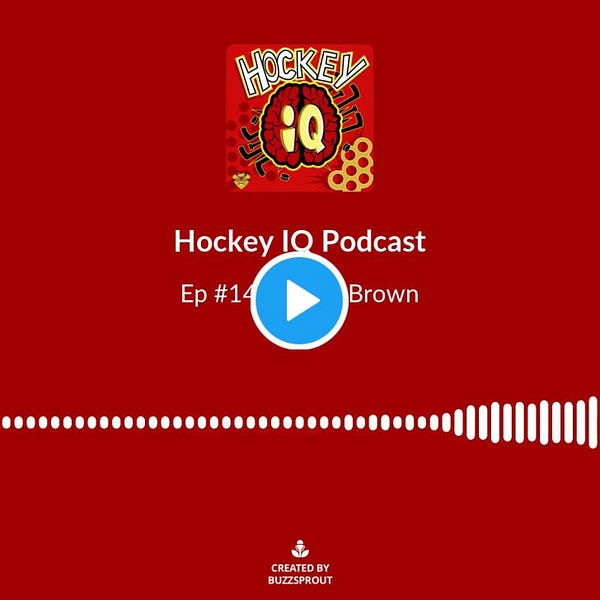Skills That Transfer, Skills That Last
What really matters when developing hockey skills
Regardless of level, coaches should be expected to provide their players with skills that last. In today’s vernacular, this can also be termed in a bunch of other ways. Skills that are:
Projectable
Stackable
Transferable
Translatable
The key takeaway is that we’re after skills that are sustainable and that continue to be valuable regardless of the level of play. Personally, I most commonly use ‘transferable’ in my vocabulary, as the skills we’re teaching should be able to transfer from one level to the next and transfer well into any game you’ll play, and I’ve found this word is easy for my players to grasp.
Transferable vs. Non-Transferable
A transferable skill relates to skills that apply regardless of the level of play. Two examples are passing/catching pucks while your feet are continuing to move and protecting the puck and maintaining ice awareness/vision throughout the continuation.
Non-transferable skills relate to skills that work well at the current level, but will cause problems are higher levels of hockey. We all know a player that dominates against bad teams but struggles against players and teams that have equal or greater talent.
So, which players project well into the future and into the next level?
Projecting a player’s future success
“Projectable” players are those who can continue to make an impact on the game as they move up levels of play.
“Unprojectable” players are those that have placeholder skills that expire as players move up the pyramid or lack diversity in how that can play effectively.
The classic example is a player that is more physically developed and has (artificial) success by being faster and stronger than their competition. They lean on their powerful forward strides and zoom around the ice without changing speeds. Once other players catch up, physically speaking, they struggle because they cannot create offense anymore given their existing asset base.
Another example would be a player that gets almost all of his/her puck touches off of turnovers rather than passes from teammates. If a player is creating the majority of their puck touches by pressuring and jumping on loose pucks, that is an issue, as those pucks are fewer and farther between as the opposition’s skill levels increases. Most scouts would mark this down as it shows a lack of forethought that will be required at the next level.
In a recent episode of the Hockey IQ Podcast featuring Mitch Brown, Mitch discussed the three common goals that junior players are able to score, but do not transfer to the professional game.


We’ll bail you out if you’re too lazy to click… But seriously, add our weekly podcast to your queue. Available now on Spotify, Apple, or HockeysArsenal.com
Standing near the crease and whacking home rebounds and tips. Timing is not required and the player is often unguarded or (at a minimum) not tied up.
Long-range shots. Picking on goalies with less skill and taking advantage of the large amount of time afforded by junior-level defensemen.
Outside lane net drive. Picking on players who struggle to skate/pivot or have poor threat awareness.
Examples of transferable skills
Awareness
Full ice vision - With and without the puck with scanning habits
Slowing the perceived game speed by prioritizing processing speed
Being space interpreter, to understand time, speed, and space.
Creating 2v1s around the rink to break down the opposition
Having a great process to improve the conditions of the puck
Shooting
Shooting off of a pass (bonus: shooting off a bad pass)
Having proper shooting technique
Taking shots from the danger areas instead of coming down the wing and shooting from distance
Proper power generation technique
Puck Protection
Puck protection while keeping ice vision & awareness
Establishing body position instead of fishing
Physical
Continuing to increase your hardware
Separation of the upper and lower body to multitask and blend multiple skills together
Winning puck battles by gaining position before possession
Genius-level movement to create for yourself and others
Skating
Changing speeds to be deceptive (Having skills vs actually weaponizing those skills)
Carrying speed through turns
Being able to crossover and be efficient when skating
Being an ankle bender to improve movement.
Creating speed differentials to create space
Figuring out how make opponents to look like traffic cones
Mental
Being able to take adversity and turn it into a growth accelerator
Dictating play rather than reacting to play
Avoiding point shots and other low percentage plays to look for better ways to create offense
Having a manipulation mindset
Understanding and executing on off-the-puck roles
Passing
Having puck acquisition routes to make passing possible
Being able to use multiple styles of passes (hook, slips, etc.)
Creating space for others and opening passing lanes
Choosing your spots by understanding a possession puck vs a possession puck
Quickly being able to go through passing progressions
The Conundrum
People like to win. Coaches, players, and parents can easily see what works now and enjoy that success. Everyone wants to see immediate results, but teaching a defenseman to shoot the puck ‘glass and out’ does not enhance their development.
Yes, it may lead to fewer memorable turnovers that turn into goals. Yet, there is no transferability with that habit to another level of hockey. Ultimately, those players will hit ceilings very quickly.
The question does not become is the skill being learned, but rather is the skill being applied properly? “Win now” should never come at the cost of players accumulating transferable skills. Breaking out of the “what works now” mentality, and instead opting for true long-term development is vital for those that want to build skills that transfer, and it’s vital for building skills that last.
Good things most certainly come to those who hold the long-term view.
Did you enjoy this newsletter?
Help us spread the ideas within and share it with the people you care about

